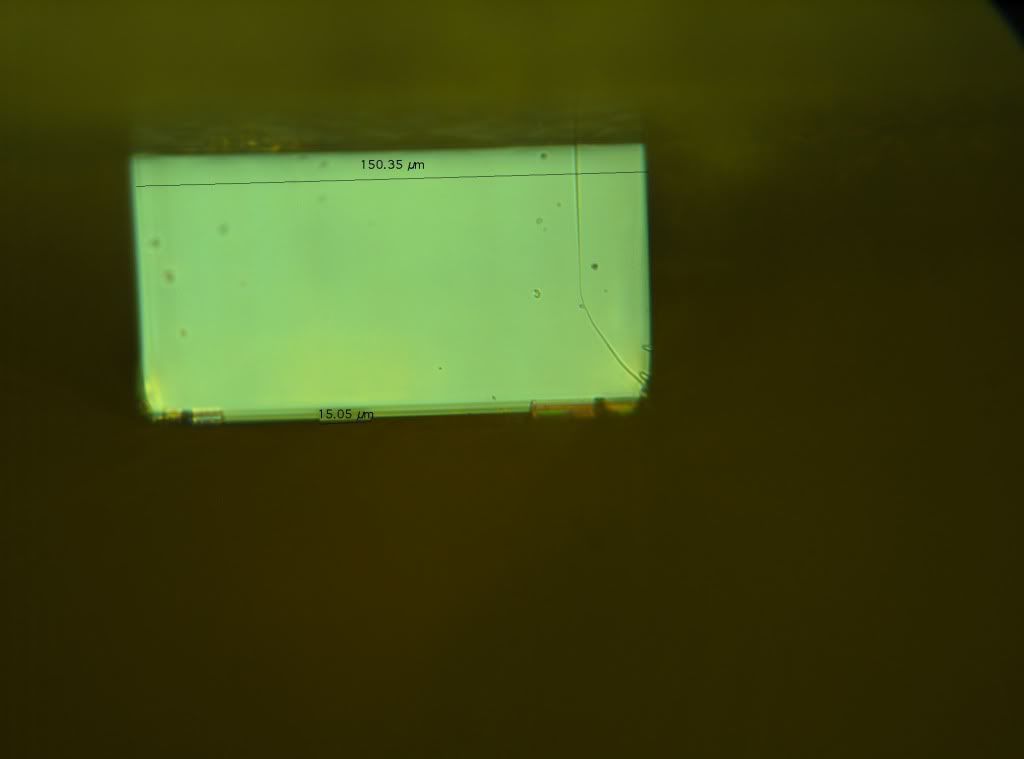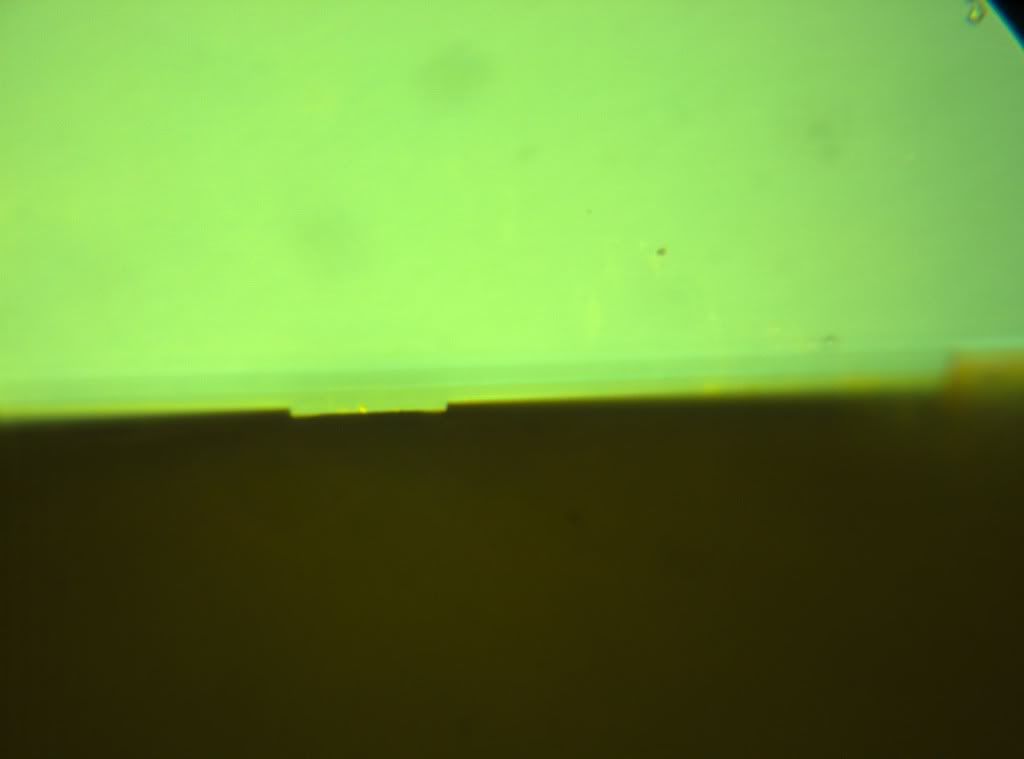- Joined
- Aug 25, 2007
- Messages
- 2,007
- Points
- 63
So yeah, I got this diode from theMonk, who got it from daguin. It's supposedly a "zombie", but I haven't powered it on to look, but I'll trust them.
If it is lasing, I'm freakin' impressed. I've watched this kind of damage happen to a diode under a microscope before, watching as it happened. It's not pretty, but it is pretty awesome to watch. So yeah, here are some macros of this diode that Dave treated so cruelly. Enjoy!
WARNING: These images of diode carnage are not for the faint of heart. If you care deeply about diodes and can't stand destruction, look away. You have been warned.
Oh, and sorry they're all upside down, the light worked better that way. And the color balance is screwy on many of them, so yeah, sorry.
--------------------------------------------
First, the typical 45deg shot. You can see the pedestal, the base the diode is mounted on, some bonding wires, and the front facet of the diode. Depth-of-field sucks, so that's all you can see. Can't see any damage yet...

Next, an end-on view of the facet of the diode. A pretty sweet image. The facet is the bright part.

And now, a low-mag top-down image of the diode, totally cringe-worthy

And the same image, apologies for the color balance, but with a handy scale bar. In case you can't read it, the die is about 1200 microns long.

Moving on, next magnification, again a view of the diode's front facet. Not a bad image at all.

And, the next image is the same magnification, again top-down. Ouch. Yeah, this diode went through a terrible event in its life. I anticipate intensive therapy for the rest of its life.

One more top-down image, zoomed in a bit on the top facet. Even through all the destruction, you can see some of the interesting bits of the diode's structure (especially down in the bottom left hand corner of the image where the output facet is) related to an on-going thread in the Science sub-section regarding multiple lateral mode diode.
Sadly, this is just the 3rd of 6 magnification levels available. I was able to use all 6 objectives on the facet (see below), but not on the top-down view. In order to use the 3 higher magnifications, I'll have to remove the diode from the 5.6mm can base, because that base prevented the objective from getting close enough to see the diode, since the working distance gets to be much less than 2mm.

And now, zooming in on the facet of the diode. This is the 3rd magnification level. Curiouser and curiouser.

4th magnification level. I see a ridge there....

Same, with some scale bars.

5th magnification level.

And 6th and final level of magnification. Yep, that's a 15 micron ridge there for some later waveguiding of some kind. And some pretty impressive imaging, if I do say so myself. A little bit of tinkering/deconstructing, and this level of magnification may be achievable in the top-down view. Then of course, there are also electron microscopes as well.

If it is lasing, I'm freakin' impressed. I've watched this kind of damage happen to a diode under a microscope before, watching as it happened. It's not pretty, but it is pretty awesome to watch. So yeah, here are some macros of this diode that Dave treated so cruelly. Enjoy!
WARNING: These images of diode carnage are not for the faint of heart. If you care deeply about diodes and can't stand destruction, look away. You have been warned.
Oh, and sorry they're all upside down, the light worked better that way. And the color balance is screwy on many of them, so yeah, sorry.
--------------------------------------------
First, the typical 45deg shot. You can see the pedestal, the base the diode is mounted on, some bonding wires, and the front facet of the diode. Depth-of-field sucks, so that's all you can see. Can't see any damage yet...

Next, an end-on view of the facet of the diode. A pretty sweet image. The facet is the bright part.

And now, a low-mag top-down image of the diode, totally cringe-worthy

And the same image, apologies for the color balance, but with a handy scale bar. In case you can't read it, the die is about 1200 microns long.

Moving on, next magnification, again a view of the diode's front facet. Not a bad image at all.

And, the next image is the same magnification, again top-down. Ouch. Yeah, this diode went through a terrible event in its life. I anticipate intensive therapy for the rest of its life.

One more top-down image, zoomed in a bit on the top facet. Even through all the destruction, you can see some of the interesting bits of the diode's structure (especially down in the bottom left hand corner of the image where the output facet is) related to an on-going thread in the Science sub-section regarding multiple lateral mode diode.
Sadly, this is just the 3rd of 6 magnification levels available. I was able to use all 6 objectives on the facet (see below), but not on the top-down view. In order to use the 3 higher magnifications, I'll have to remove the diode from the 5.6mm can base, because that base prevented the objective from getting close enough to see the diode, since the working distance gets to be much less than 2mm.

And now, zooming in on the facet of the diode. This is the 3rd magnification level. Curiouser and curiouser.

4th magnification level. I see a ridge there....

Same, with some scale bars.

5th magnification level.

And 6th and final level of magnification. Yep, that's a 15 micron ridge there for some later waveguiding of some kind. And some pretty impressive imaging, if I do say so myself. A little bit of tinkering/deconstructing, and this level of magnification may be achievable in the top-down view. Then of course, there are also electron microscopes as well.






